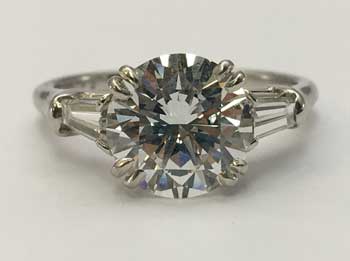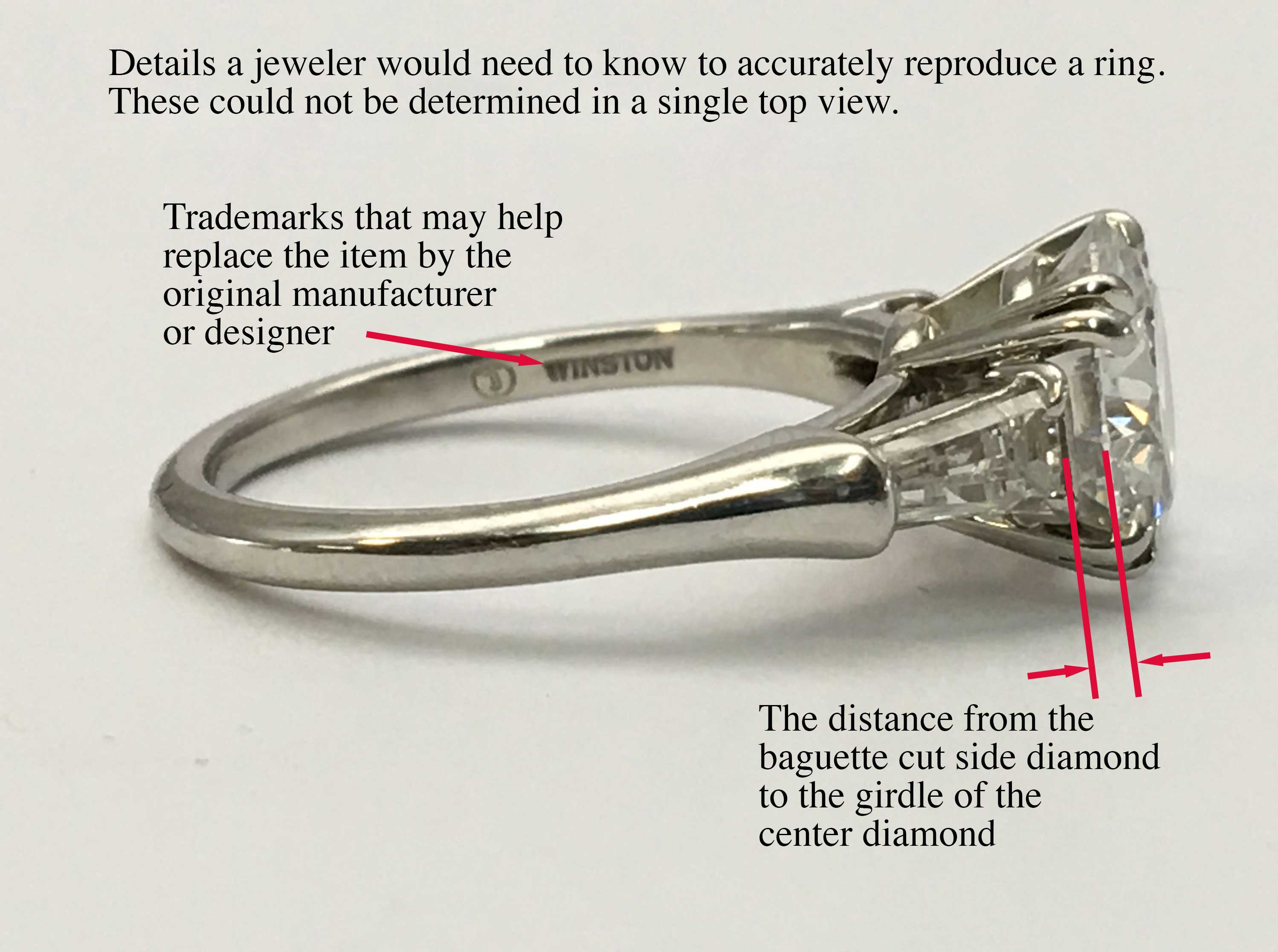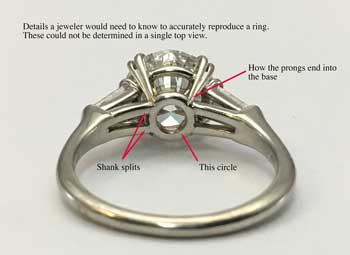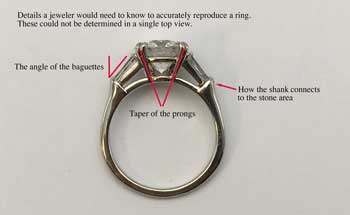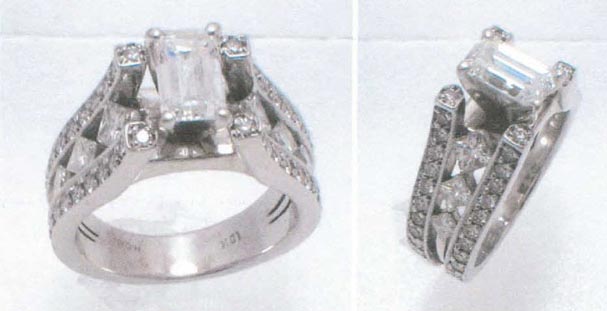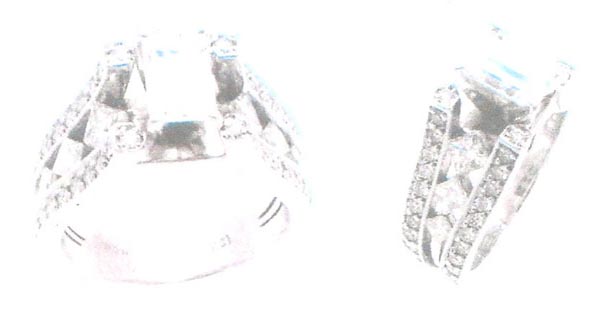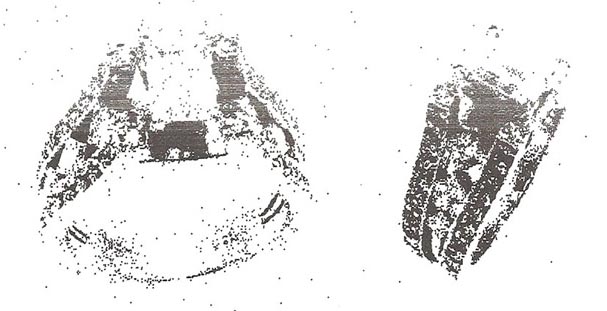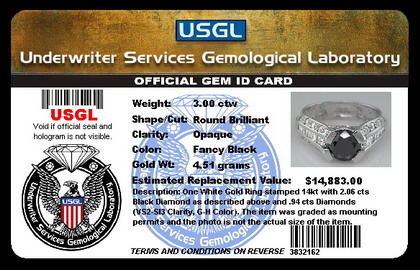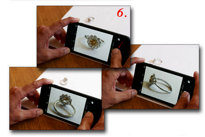How important is the picture? Very!
For every piece of scheduled jewelry, a photo of the piece is essential. It should be as much a part of the submission as an appraisal.
In fact, best is to have 2 or more photos, taken from different angles.
Photos can short-circuit bogus claims.
- A good photo or set of photos shows that the jewelry actually exists.
- If the jewelry was acquired and appraised some time ago, a current photo shows the jewelry is in the insured's possession at the time the policy is written.
- A current photo can also reveal the condition of the jewelry at the time the policy is written, so previous damage will not be the subject of a future claim.
Photos make for an accurate replacement in the event of loss.
- Especially for unusual or complex jewelry, photos can show details that could not be easily described in words.
- A design that appears unique to the customer may turn out to be easily duplicated by a professional gemologist with CAD-CAM technology.
Photos can help in recovering stolen jewelry.
- Suppose the thief gets caught and the jewelry is retrieved. For law enforcement officials and the owner, matching stolen jewelry with its picture is much easier than making sense of an appraisal.
Quality of the photos is critical!
Unacceptable:
Photos printed on the appraisal usually do not show sufficient detail to be very useful. This is particularly true if the appraisal on file is a photocopy or fax.
Photos on certificates, gem ID cards, and other such documents that accompany jewelry at time of sale, often carry a generic picture rather than a photo of the specific piece of jewelry the buyer purchased. (Like the gem description and valuation on such docs, the picture is not to be relied on.)
Acceptable — and easy!
Today's smartphones make it easy for agent or insured to take very clear, sharp jewelry photos. Follow the link for some photo tips.
FOR AGENTS & UNDERWRITERS
A picture printed on the appraisal is likely to be small and of low resolution, and it may be poorly photographed or printed. Such a picture is of little use. It is better to have new photos in jpg format.
It's best to have at least three photos, showing top, bottom and side views. The closer up, the better. Smart phone photos are easy and without cost—what a value-add for the agency.
Photos are important in the event of a claim. Many insurance companies don't write agreed value, but they wind up writing a check for agreed value because they have no photos on which to base a replacement. More pictures make for a more successful settlement.
Offer to take photos of jewelry being insured, or recommend that the insured take pictures with their smart phone. Explain that having pictures from several angles is to their advantage in the event of a loss.
FOR ADJUSTERS
When pricing a replacement, include any photos of the jewelry on file, as well as the appraisal description. (Avoid disclosing the insured value. The replacement house should be matching the quality of the jewelry, not its [possibly inflated] valuation.)
When submitting damaged jewelry for repair, include photos from your file. A gemologist may see that the apparent damage was actually the original condition of the jewelry when it was insured.
©2000-2025, JCRS Inland Marine Solutions, Inc. All Rights Reserved. www.jcrs.com

